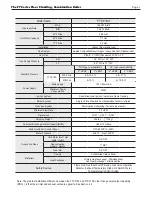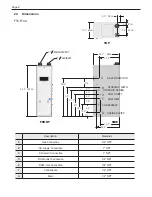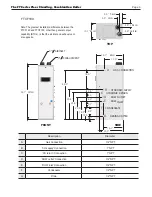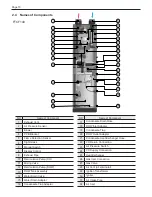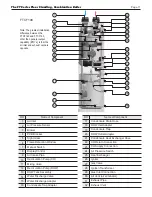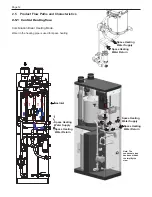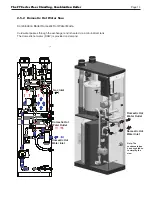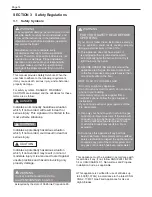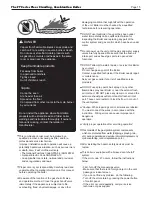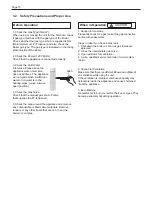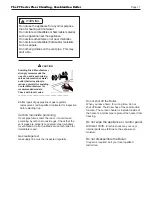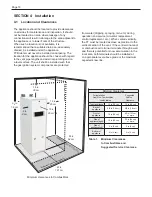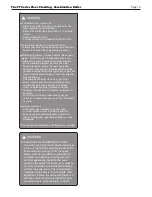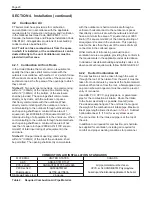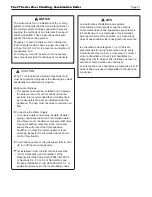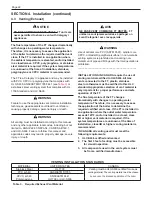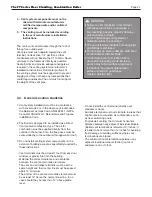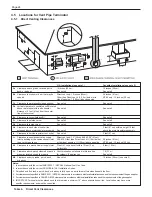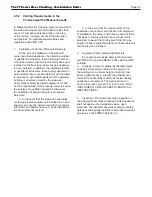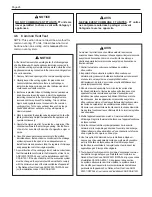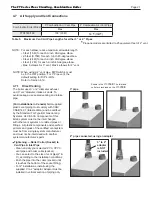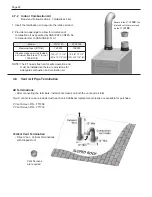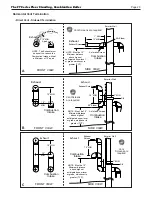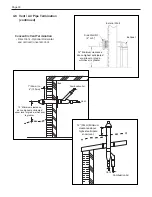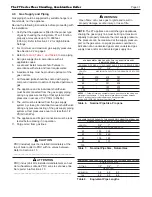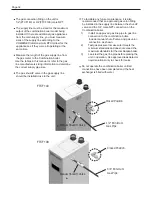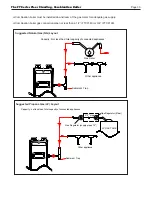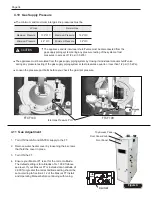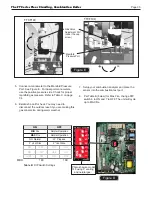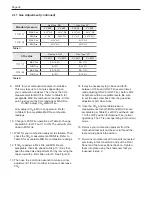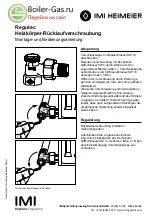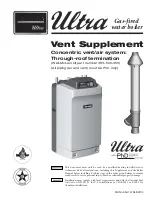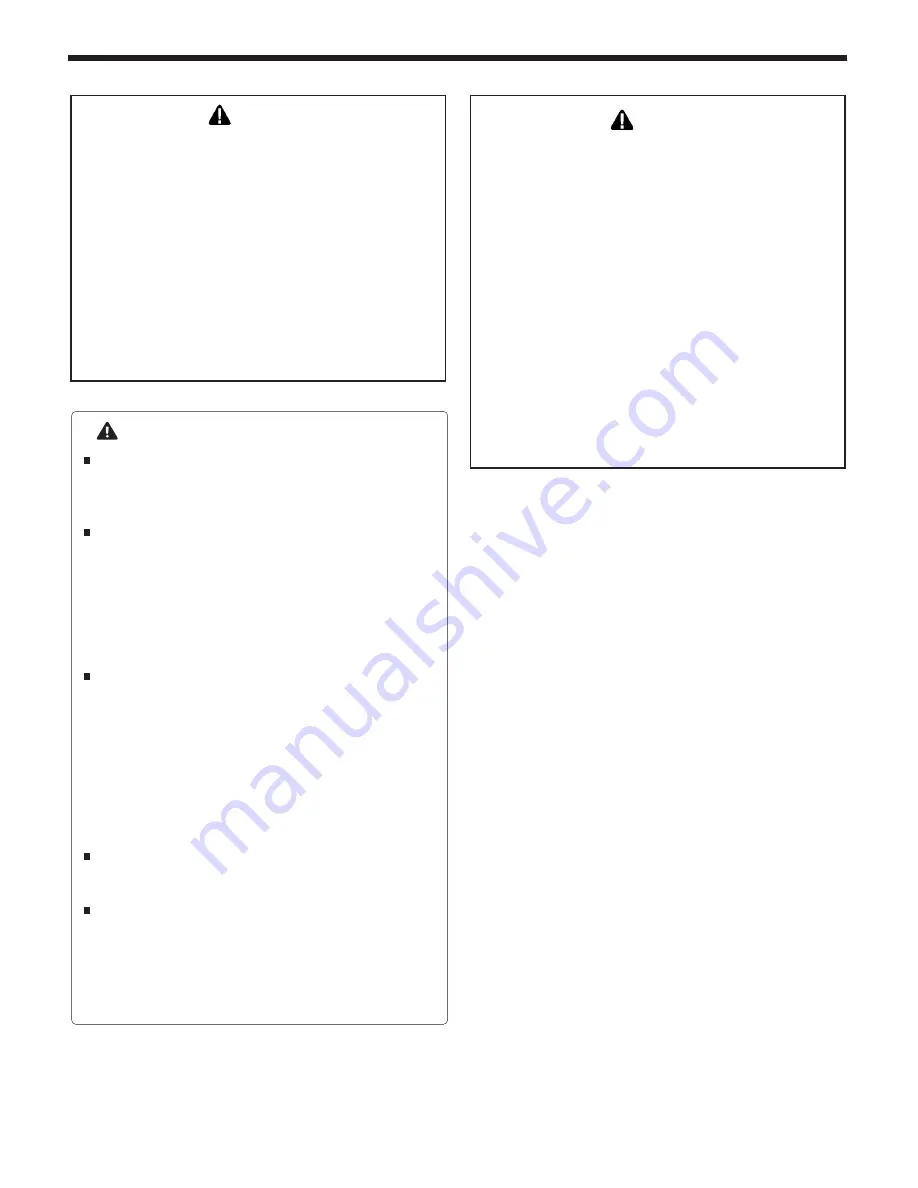
The FT Series Floor Standing, Combination Boiler
Page 21
The FT is standard as a Natural Gas Boiler and
must be converted if propane is the desired gas, unless
specifically manufactured for propane.
Adequate drainage
• The appliance should be installed not to damage
the adjacent area. If such locations cannot be
avoided, it is recommended that a suitable drain
pan, adequately drained, be installed under the
appliance. The pan must not block combustion air
flow.
Connecting the Water Supply
• To conserve water and energy, insulate all water
piping—especially the hot and recirculation water
lines. Never cover the drain or pressure relief valve.
Having a backflow preventer in the cold water
supply line will prevent thermal expansion
backflow. Contact the water supplier or local
plumbing inspector for information about how to
control this situation.
If overheating occurs or the gas supply fails to shut
off, turn off the manual gas valve.
This installation must conform with below section
• “Air for Combustion and Ventilation” of the
National Fuel Gas Code, ANSI Z224.1/NFPA 54,
or Sections 8.2, 8.3 or 8.4 of Natural Gas and
Propane Installation Code, CAN/CSA B149.1, or
applicable provisions of the local building codes.
CAUTION
NOTICE
The instructions for the installation of the venting
system shall specify that the horizontal portions of
the venting system shall be supported to prevent
sagging; the methods of and intervals for support
shall be specified. These instructions shall also
specify that the venting system:
Category I, II and IV boilers must be installed so
that horizontal sections have a slope of at least ¼
inch per foot (21 mm/m) to prevent accumulation of
condensate; and
For Category II and IV boilers, where necessary,
have means provided for drainage of condensate.
AVIS
Les instructions d'installation du système
d'évacuation doivent préciser que les sections
horizontales doivent être supportées pour prévenir
le fléchissement. Les méthodes et les intervalles
de support doivent être spécifiés. Les instructions
doivent aussi indiquer les renseignements suivants:
les chaudières de catégories I, II et IV doivent
présenter des tronçons horizontaux dont la pente
montante est d'au moins ¼ po par pied (21 mm/m)
entre la chaudière et l'évent; les chaudières de
catégories II et IV doivent être installées de façon à
empêcher l'accumulation de condensat;
et si nécessaire, les chaudières de catégories II et IV
doivent être pourvues de dispositifs d'évacuation du
condensat.

